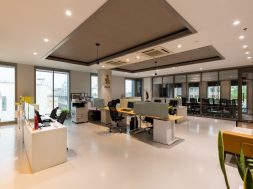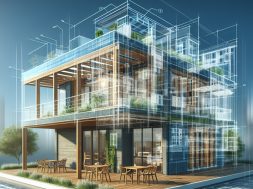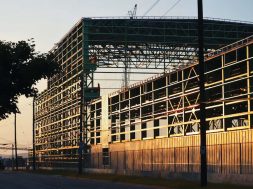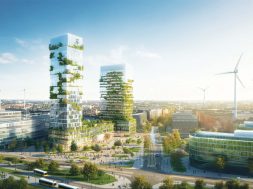Airport Design: A smart integration of safety, comfort and aesthetics
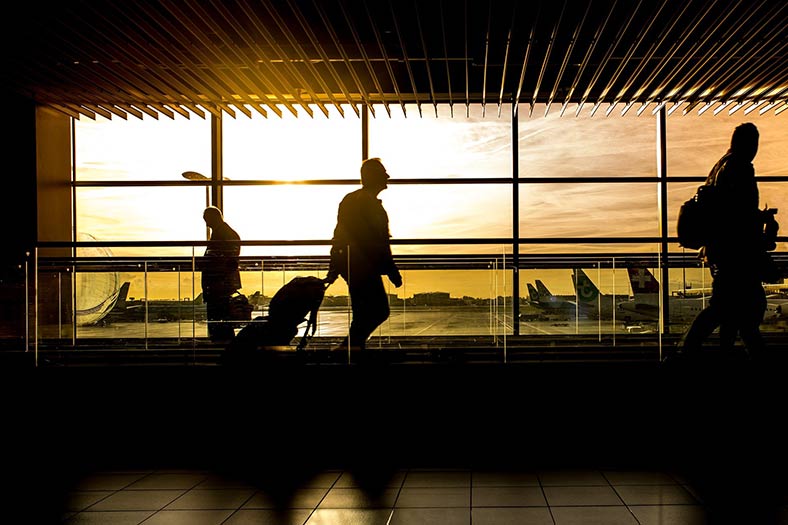
Apart from these three key parameters imparting the influences of nature, sustainability, local and social content in the design also play an important role in creating a sense of place, and making journeys to and from the airport a memorable one.
As newer cities come up the needs for efficient connectivity of these cities to the world will be driven by newer airports likewise the existing airports which are there also will need to expand.
Robey Lal, Airport Planner and Operations Advisor, ICT Pvt. Ltd. points out “Existing airports have to expand as much as possible, within the constraints keeping safety considerations in mind. Like newer airports, expansion of existing airports too requires deft planning. As an architect who has been involved in numerous projects pertaining to airports in India and across the globe, I can tell you, the first thing is actually safety. Safety, convenience, and aesthetics, there are three key areas. Then there is the aesthetics and design as also the technical aspects. The expansions which have to be carried out must not upset the passengers going to the terminals, which are in use.”
Safety and convenience are a must; they make the airport efficient in terms of its functionality. However, to ensure airports can create a sense of place it is equally important to take note of its design and aesthetics. “Airports have undergone extensive evolution – from being mere gateways to nodal points of development, and eventually turning into thriving urban-ecosystems,” says Shivani Gour, Studio Director, Gensler “An airport’s local context is, therefore, its ground of germination, so it may potentially anchor its future development. From this perspective it becomes vital for it to be rooted in its cultural context to suitably serve its people. Airports are designed to offer convenience to the passenger but it’s also about making journeys and the space itself memorable. Airports can serve as a window for passengers to know more about the city, its culture and its ambitions So, design wise it just becomes imperative to impart a local context, a social context and ensure the design in a way connects suitably to the people of the region it is based in”
As construction, architecture and design practices aim to be greener and sustainable with each passing day, it is necessary that airports too reflect this evolution. Prasannamurti Desai, Vice president- Landscape at Bangalore International Airport says “For us, visually for all Indians, airports are still an aspirational space, these are built in such a way that, we just are emulating ourselves in terms of making all these airports beautiful, green, clean, and customer friendly. Global influences do play a positive role in this development. We are quite influenced by the developments taking place in Singapore, Europe etc. Whether it’s Europe or India, all airports would like to leave a lasting memory of that journey. The new Jewel Changi airport in Singapore features a 6-acre indoor forest, walking trails, and the world’s tallest indoor waterfall. This restorative mecca filled with 2,500 trees and 100,000 shrubs not only revitalizes weary international travelers but is also open to the public. So, the idea is to integrate nature with the traveler, who will have a long-lasting memory of his travels. It invites him to come to the airport again and again. In India, Bangalore Airport serves a s a benchmark in terms of greenery and landscape design, we would like to surpass the set benchmarks to make the design more interactive and interesting. The pandemic has taught us what it feels like to stay away from nature, greenery and open spaces, so it is essential to incorporate greenery into our existing infrastructure as well including the airports. This will have a soothing and relaxing effect on the passenger and the journey will become more interesting than you think.”
Adding to it Evan Walker, Lead Pre-Construction and Project Controls, Turner India points out “Nature has the ability to connect us with something bigger than ourselves. So, it is essential to invoke and impart these key elements in an airport terminal. A lot of it depends on which city you’re serving, what stage of development the city is in where the airport is based, in larger cities unlike smaller cities there exists a larger swath of passenger traffic. Hence apart from creating a functional airport, it is a civic and social responsibility to create an environment that is not only aesthetically appealing, but also adds a calming and tranquil effect in the overall airport experience. All of this needs to be done in an ecological way. “
Airports being airports consume a lot of energy and as evolution and innovations in architecture and construction continues, newer materials come to the fore it is essential to understand that it is important to make it energy efficient. Azril Amir Jaafar, Principal and Director at Veritas Design Group says “Airport is a huge building with a lot of double and triple volume spaces and it takes a great deal of energy and power to cool such spaces efficiently. Hence the HVAC requirements of the airport have to be skillfully analyzed to ensure it doesn’t consume much power. For this we’ll have to evaluate the space and the experience within the airport itself. Another component, perhaps, is the skin. Most of the airports have beautiful facades for designing these facades high performance, glass can be used to save energy. The roof is another important element that we have to consider. If I were to refurbish an existing airport, I would upgrade the HVAC system and make it less centralized. So, that it will be more flexible, and one can have more control over it. Use of natural lighting is also something I would check upon, if the airport receives a lot of ambient light, then too energy costs can come down. So, in short, the three key areas to achieve energy efficiency in an airport are addressing the HVAC requirements, invoking natural lighting and ensuring building envelopes too are designed using energy efficient materials.”
In the present circumstances wherein, the pandemic has created a complex situation wherein certain changes are desired in the existing airports. Says Mahendra Pawar, Director, Zen Bulls “Changes can or should be expected, with respect to the circulation of arrival & departure with major segregation of transiting passengers, visiting passengers, VIP passengers, at the time of check in or before security check. In case of infected passengers, they should be enclosed or segregated in incubation zones or deportation zones in case of International. Each airport should have a Medicare center for preventive treatment testing services or a lab for non-documented travelers, for analysis of Covid19 infected conditions. Sanitized lounges, which should be treated with airlock systems, from the infected or possible spread areas. During security check the surveillance of bio terrorism should be taken into consideration, can of major concern since airports are very vulnerable to such attacks.
Cookie Consent
We use cookies to personalize your experience. By continuing to visit this website you agree to our Terms & Conditions, Privacy Policy and Cookie Policy.
